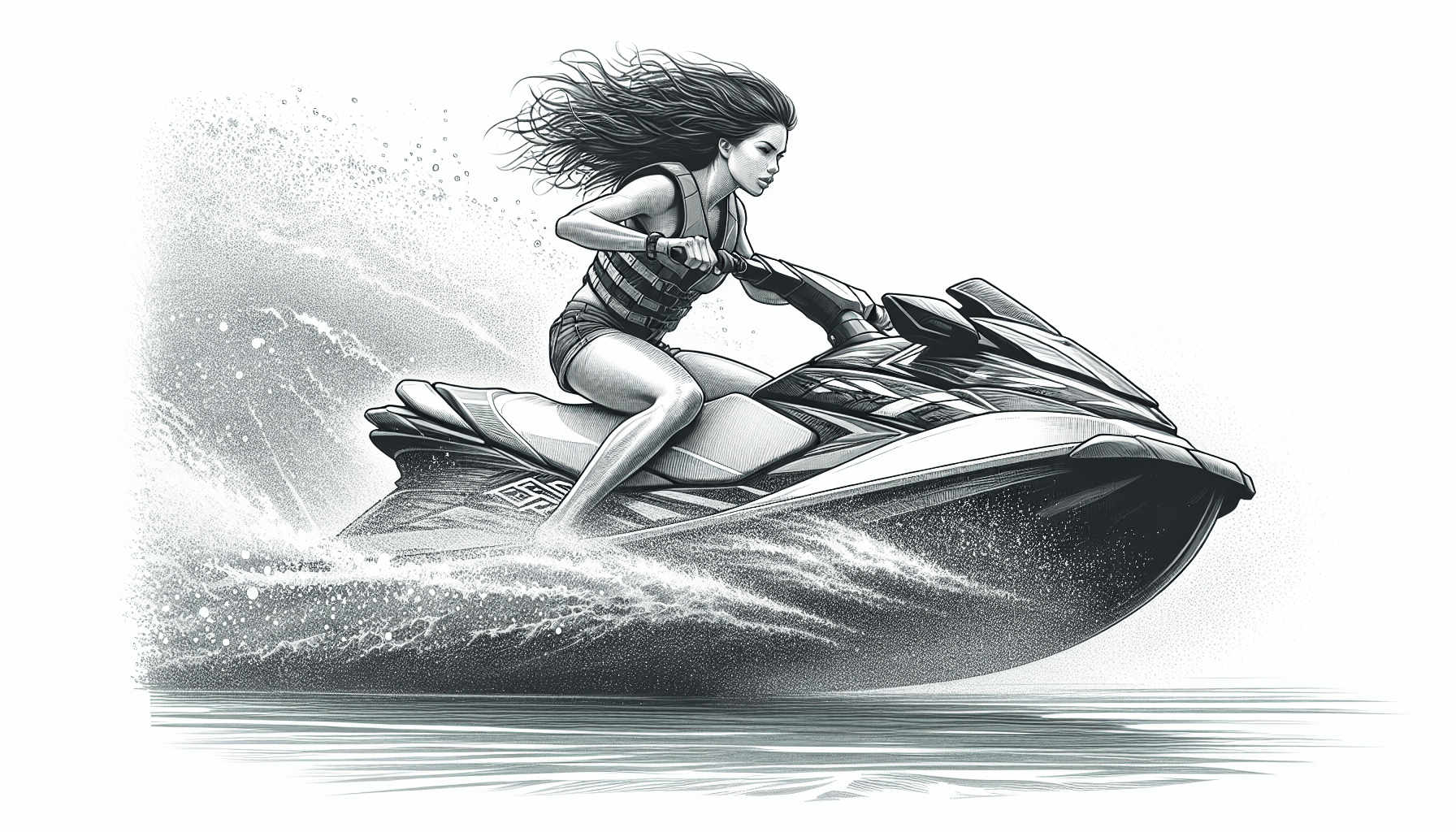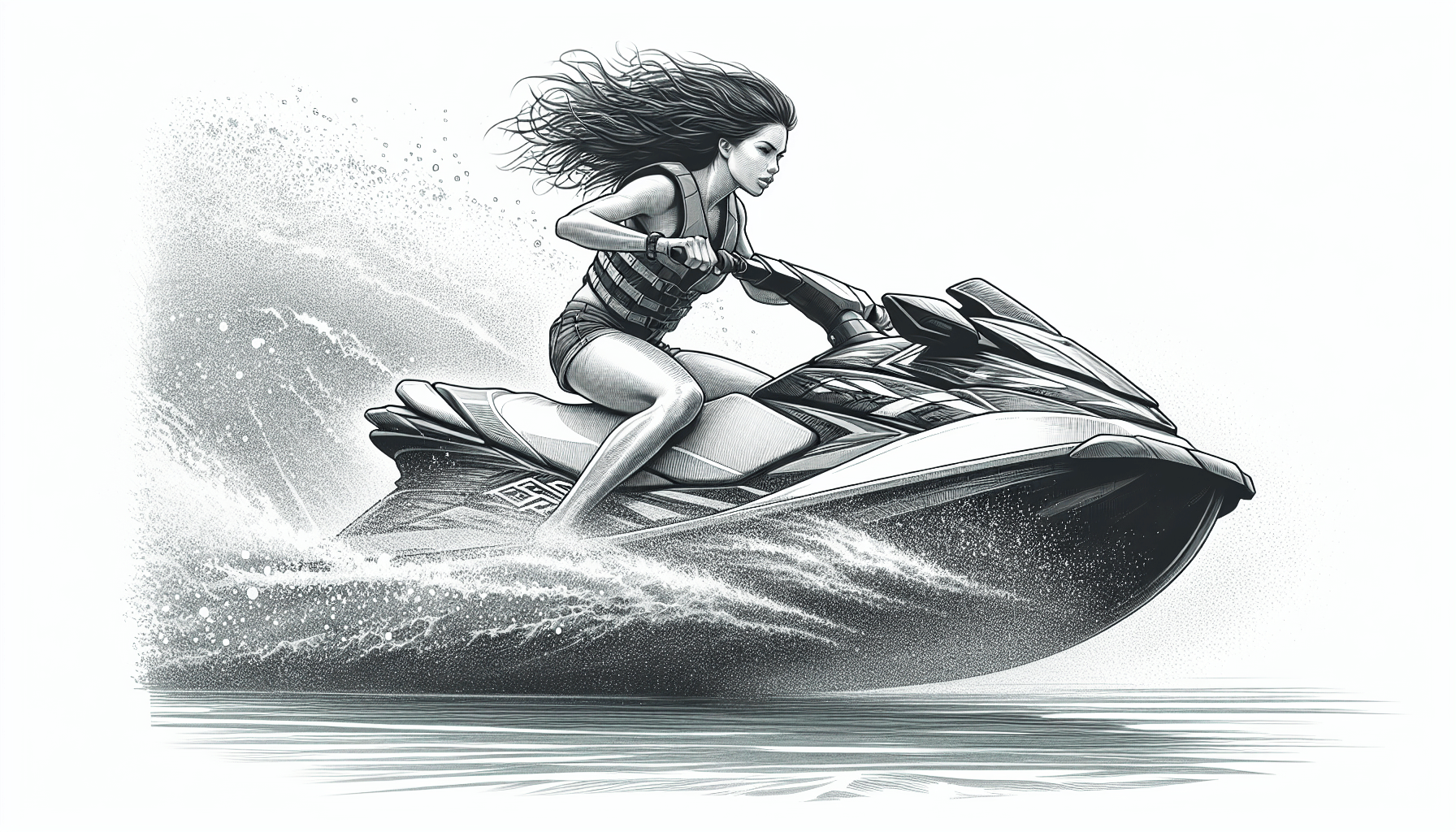How Do You Turn A Jet Ski?

So you’ve just hopped on a jet ski, feeling the adrenaline rush as you speed across the water. But now comes the question: how do you turn this powerful machine? Well, look no further than A2Z Powersport, the go-to company for all things jet ski-related. With their expertise and knowledge of the industry, A2Z Powersport is the place to go when it comes to renting jet skis. Located at the Fort Morgan Marina in Orange Beach, AL, they have everything you need to navigate those turns with ease. Whether you’re a beginner or a seasoned jet skier, A2Z Powersport is ready to assist you in making the most out of your jet ski experience. Don’t waste another second – head over to A2Z Powersport and discover the secrets to turning a jet ski like a pro.
Understanding the Basics of Turning
Importance of understanding turning techniques
Before you embark on your thrilling jet ski adventure, it is crucial to familiarize yourself with the basics of turning. Turning is an essential skill that every jet skier should master to ensure safe and enjoyable rides. Understanding the various turning techniques will not only enhance your maneuverability but also allow you to navigate different water conditions and avoid potential hazards. By taking the time to learn and practice these techniques, you’ll be able to maximize the performance of your jet ski and make the most of your waterborne escapades.
Basic principles of turning a jet ski
Turning a jet ski involves a combination of body positioning, handlebar control, throttle management, and steering techniques. By implementing these principles, you can execute smooth and controlled turns that enhance the overall stability and safety of your ride. It is important to keep in mind that the specific methods used for turning may vary depending on the model and make of your jet ski. Therefore, it is advisable to refer to the manufacturer’s instructions for detailed guidance tailored to your particular watercraft.
Body Positioning
Correct body posture for turning
Maintaining the correct body posture is crucial for effective turning on a jet ski. To achieve optimal results, you should sit in a stable and balanced position, keeping your weight centered. This ensures that the jet ski remains stable during turns and reduces the chances of capsizing. Additionally, it is essential to grip the seat with your knees to maintain stability and control. By adopting this correct body posture, you can distribute your weight evenly, allowing the jet ski to respond smoothly to your turning inputs.
How to lean into the turns
Leaning into the turns is another important aspect of body positioning when it comes to turning a jet ski. As you approach a turn, gently lean your body towards the direction you want to go, while keeping your eyes focused on the desired path. This body lean helps to shift the center of gravity, promoting better balance and stability during the turn. When executed correctly, leaning into the turns allows you to maintain control of the jet ski and navigate sharp bends with ease.
Use of Handlebars
Proper grip on the handlebars
Maintaining a proper grip on the handlebars is essential for effective turning. Start by gripping the handlebars firmly, ensuring your hands are positioned comfortably but securely. Your thumbs should be wrapped around the handlebars, providing a solid grip and allowing for precise control. Avoid gripping too tightly, as this may result in limited maneuverability and fatigue. By finding the right balance of firmness and flexibility, you can ensure that your handlebar inputs are translated accurately into the jet ski’s steering system.
Importance of gentle and controlled movements
When it comes to turning a jet ski, gentle and controlled movements are key. It is important to avoid sudden or jerky motions, as these can disrupt the balance of the jet ski and compromise your overall control. Instead, focus on making smooth and deliberate handlebar inputs, gradually increasing or decreasing the steering angle as needed. By maintaining a steady and controlled approach, you’ll be able to execute turns with precision and confidence.
Throttle Control
Understanding throttle control during turns
Throttle control plays a crucial role in executing turns smoothly and safely. When approaching a turn, it is recommended to gradually reduce the throttle while maintaining a steady speed. This gradual deceleration helps to stabilize the jet ski and allows for better control during the turn. Once you have reached the desired turning angle, you can maintain a steady throttle position or apply slight acceleration to power through the turn. It is important to remember that excessive acceleration can lead to instability, so it is best to exercise caution and find the right balance of throttle input during turns.
Gradual acceleration and deceleration
In addition to throttle control during the turn itself, it is important to consider the acceleration and deceleration before and after the turn. When approaching a turn, gradually reduce your speed by easing off the throttle. This controlled deceleration allows for a smoother transition into the turn and reduces the risk of skidding or losing control. Once you have completed the turn, gradually increase the throttle to accelerate smoothly, ensuring a seamless continuation of your ride. By practicing gradual acceleration and deceleration, you can master fluid and controlled turns that enhance both safety and enjoyment.
Using the 30/60 Method
Explanation of the 30/60 method
The 30/60 method is a popular technique used by jet ski enthusiasts to execute sharp turns efficiently. This method involves splitting the turning process into two distinct phases: a 30-degree angle entry and a 60-degree angle exit. The 30-degree angle entry allows for precise control and stability as you initiate the turn, while the 60-degree angle exit promotes a smooth and controlled transition back to your original path. By employing the 30/60 method, you can execute turns with confidence and finesse, even in challenging water conditions.
Implementation steps for effective turning
To apply the 30/60 method effectively, start by identifying the desired turning point and adjusting your speed accordingly. Gradually reduce your throttle as you approach the turning point, preparing for the 30-degree angle entry. As you initiate the turn, gently lean your body into the direction of the turn, maintaining a steady grip on the handlebars. Once you have reached the 30-degree angle, gradually increase the throttle and continue to lean into the turn to achieve the 60-degree angle exit. Finally, straighten your body and return the handlebars to their neutral position to smoothly transition back onto your original path. Practice and repetition will refine your execution of the 30/60 method, allowing you to execute turns effortlessly and confidently.
Mastering the Jet Ski’s Steering
How to use the steering system effectively
To master turning on a jet ski, it is crucial to understand and utilize the steering system effectively. Most jet skis are equipped with handlebar-based steering, where turning is achieved by turning the handlebars in the desired direction. By applying gentle and precise handlebar inputs, you can control the angle and speed of the turn. It is important to familiarize yourself with the specific steering mechanism of your jet ski, as different models may have variations in sensitivity and responsiveness. By practicing and becoming comfortable with your jet ski’s steering system, you can execute turns smoothly and confidently.
Different jet ski models and their steering mechanisms
Jet skis come in various models, each with its own unique steering mechanisms. Some models feature direct steering, where turning the handlebars directly controls the angle and direction of the jet ski. Others may have assisted steering systems, utilizing additional mechanisms such as variable trim systems or reverse bucket controls to enhance maneuverability. It is important to consult the manufacturer’s instructions or seek guidance from knowledgeable professionals, like those at A2Z Powersport, to understand the steering mechanism specific to your jet ski model. By becoming acquainted with the steering system of your jet ski, you can optimize your control and execute turns efficiently.
Practicing Turns
Finding a safe and open area for practice
When it comes to practicing turns on a jet ski, safety is of paramount importance. Before attempting any turns, ensure you are in a designated water area, away from heavy boat traffic or potential obstacles. Find a wide and open space where you have ample room to maneuver and practice different turning techniques. When practicing turns, it is essential to keep a safe distance from swimmers or other individuals in the water to avoid any accidents or collisions. By finding a safe and open area to practice, you can focus on honing your turning skills without compromising the safety of yourself or others.
Step-by-step guide to practicing turns
To effectively practice turns on your jet ski, follow these step-by-step instructions:
-
Begin by familiarizing yourself with the jet ski’s controls and steering mechanism.
-
Gradually increase your speed while maintaining a stable body posture and grip on the handlebars.
-
Identify a turning point in the distance and adjust your speed accordingly.
-
As you approach the turning point, gradually reduce your throttle. Lean your body into the direction of the turn and turn the handlebars gently in the desired direction.
-
Maintain a consistent speed and steering angle throughout the turn, keeping your eyes focused on the desired path.
-
Once you have completed the turn, gradually increase the throttle and straighten your body and handlebars to return to your original path.
-
Repeat this process multiple times, gradually increasing your speed and challenging yourself with sharper turns.
Remember, practice makes perfect. The more you dedicate yourself to practicing turns, the more comfortable and proficient you will become.
Common Turning Mistakes
Identifying common errors in turning
While learning to turn a jet ski, it is not uncommon to make some mistakes along the way. Recognizing these common errors can help you identify areas for improvement and make necessary adjustments to enhance your turning technique. Common turning mistakes include:
-
Overturning: Making excessively sharp turns, which can lead to loss of control or capsizing.
-
Insufficient leaning: Failing to lean into the turns enough, resulting in reduced maneuverability and stability.
-
Jerky handlebar movements: Making sudden or abrupt handlebar inputs, leading to instability and compromised control.
-
Inconsistent throttle control: Failing to maintain a smooth and gradual acceleration and deceleration, affecting the overall balance and control of the jet ski.
Tips to avoid those mistakes
To avoid these common turning mistakes, consider the following tips:
-
Practice moderation: Aim for controlled and gradual turns rather than sharp or extreme maneuvers.
-
Mind your body posture: Make a conscious effort to lean into the turns and distribute your weight evenly for enhanced stability and control.
-
Be smooth with the handlebars: Avoid sudden or jerky handlebar movements by maintaining a steady grip and making deliberate inputs.
-
Prioritize throttle control: Practice maintaining a consistent speed and applying gradual acceleration and deceleration to ensure smooth and controlled turns.
By being mindful of these common mistakes and implementing these tips, you can finesse your turning skills and enjoy a safer and more enjoyable jet ski experience.
Safety Precautions
Wearing appropriate safety gear
When participating in any water sport, safety should always be a top priority. Before heading out on your jet ski adventure, make sure to wear the appropriate safety gear. This includes a properly fitted and Coast Guard-approved personal flotation device (PFD), a helmet to protect your head, and appropriate footwear to ensure good grip and protection. Additionally, consider wearing a wetsuit or rash guard to protect against any potential impact with the water surface. By wearing the proper safety gear, you can minimize the risk of injury and enjoy your jet ski experience with peace of mind.
Being aware of other watercraft and obstacles
Jet ski riders share the water with other watercraft, such as boats, kayaks, and paddleboards. It is crucial to stay alert and maintain situational awareness while on your jet ski. Always be mindful of other watercraft and their right of way. Keep a safe distance from other vessels and avoid crossing their path abruptly. In addition, be aware of any submerged obstacles, such as rocks or shallow areas, that could pose a risk to both you and your jet ski. By staying vigilant and being mindful of your surroundings, you can ensure a safe and incident-free ride.
Benefits of Renting from A2Z Powersport
Reliable rental service with a wide range of jet ski options
When it comes to renting a jet ski for your next adventure, choosing the right rental service is crucial. A2Z Powersport, located in Orange Beach, AL at the Fort Morgan Marina, is the go-to company that knows all about jet skis and the industry. They offer a reliable rental service with a wide range of jet ski options to suit every rider’s preferences and skill levels. Whether you are a beginner looking for a stable and easy-to-handle model or an experienced rider seeking high-performance thrills, A2Z Powersport has the perfect jet ski to meet your needs.
Knowledgeable staff providing guidance and support
A2Z Powersport takes pride in their knowledgeable staff who are dedicated to providing guidance and support to their customers. Their friendly experts are well-versed in all things jet ski and are more than happy to offer tips, advice, and recommendations to ensure that you have a safe and enjoyable experience on the water. Whether you have questions about turning techniques, need assistance with handling the jet ski, or want advice on the best riding spots in the area, the staff at A2Z Powersport will go above and beyond to assist you. Renting from A2Z Powersport guarantees not only a high-quality jet ski but also the expertise and support you need for a fantastic jet ski adventure.
In conclusion, understanding the basics of turning is essential for every jet ski rider. By mastering body positioning, handlebar control, throttle management, and steering techniques, you can execute smooth and controlled turns that enhance both your safety and enjoyment on a jet ski. Remember to practice in a safe and open area, be mindful of common turning mistakes, and prioritize safety precautions such as wearing the appropriate gear and being aware of your surroundings. And for the ultimate jet ski rental experience, look no further than A2Z Powersport, where you’ll find a reliable service and a knowledgeable team ready to assist you. So, get out there, have fun, and ride the waves with confidence!







